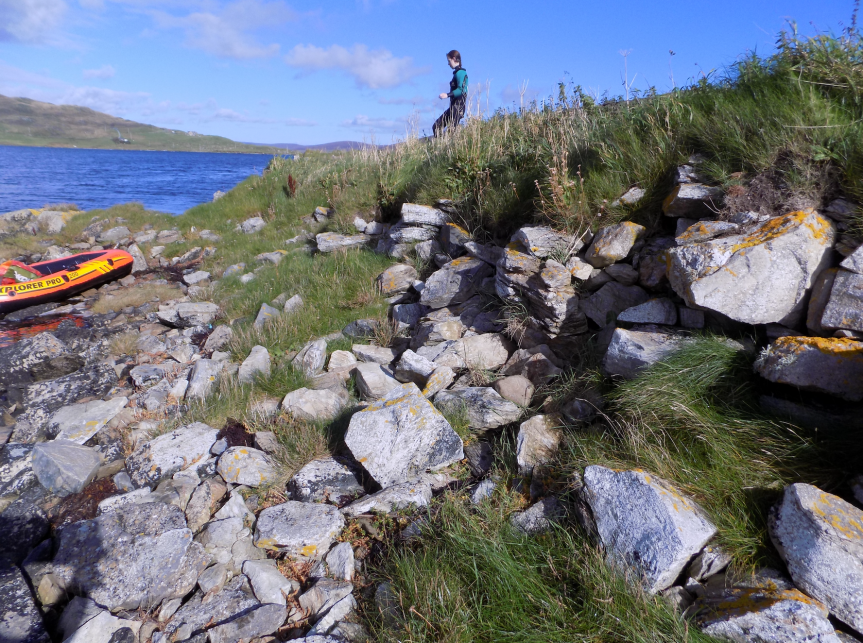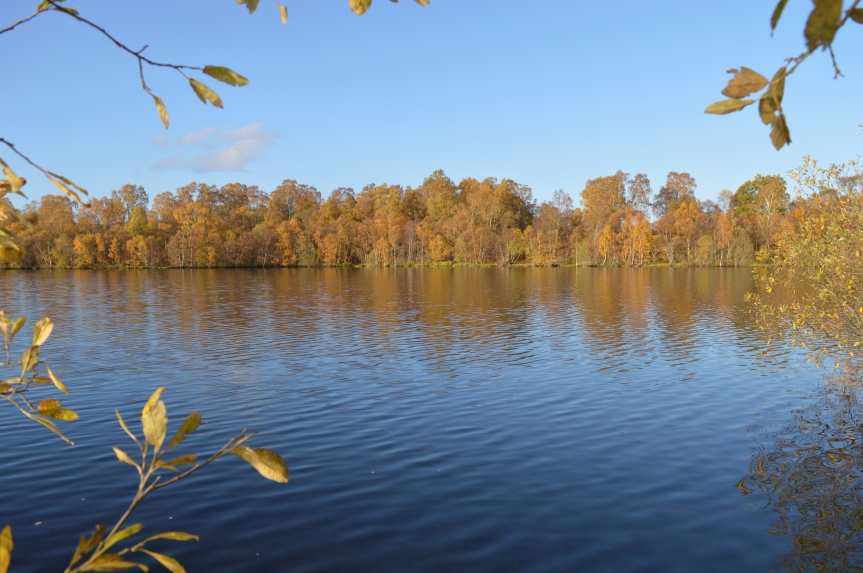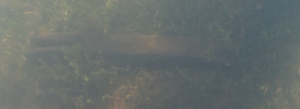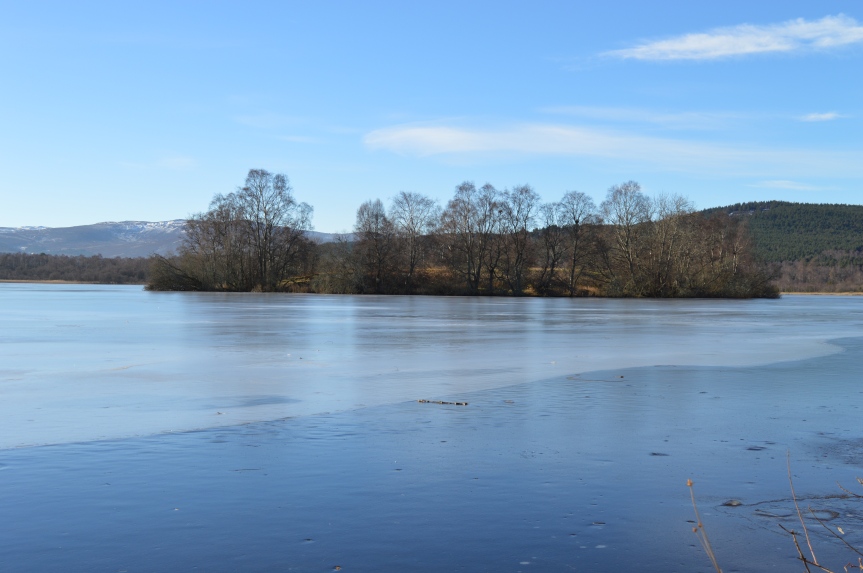A new monumental drystone roundhouse was discovered while conducting underwater and terrestrial archaeological survey in Strom Loch, Whiteness, Shetland. The site is the central of three islets, called the Holms of Hogaland. This site has not been identified to date, and will be a new entry into a long list of brochs and possible brochs known in Shetland.
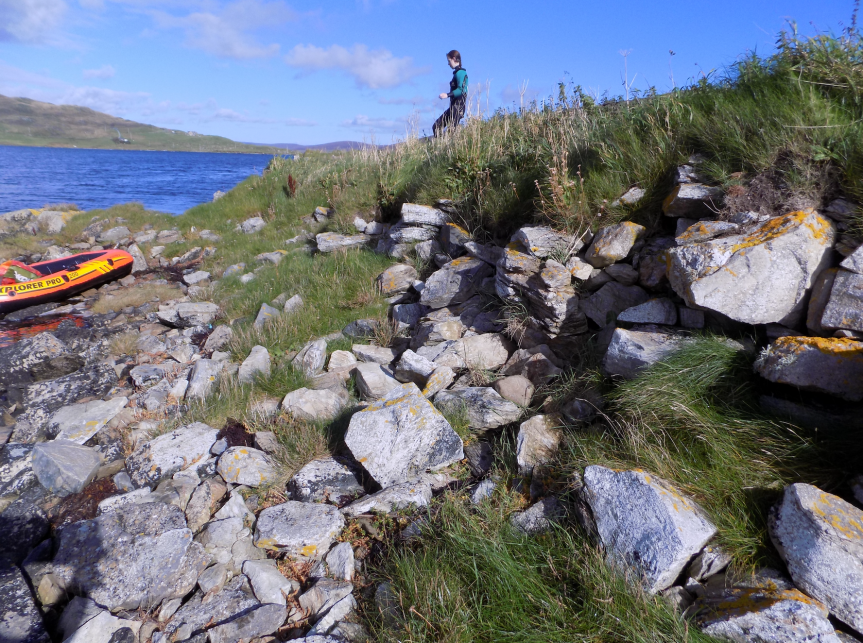
In conducting survey at Castle Holm, Strom Loch, Shetland the opportunity was taken to investigate a small islet across the loch at the Holms of Hogaland. I was tipped off by Claire Christie, who is working at the Shetland Amenity Trust using high resolution aerial photographs to map Shetland’s Sites and Monuments Record, that there may be a causeway out to the island. Upon inspection, myself and Sally Evans (an intrepid volunteer) were amazed by what we saw.

The majority of this islet was covered in a large mound around three metres high and about 16x14m across. There were obvious structural features, including coursed stonework and potentially the remains of orthostats or piers (ie. internal divisions within the former structure). In the middle of the island is small circular depression about four metres across that presumably represents internal space within this large structure. On the west side of the island, and most exposed to the weather, there appears to be some active erosion, although the rate and extent of this is difficult to know as there is no baseline of information with which to compare.


Bedrock can be seen at the edges of island, so it is clear that this islet is not completely artificial, however, it seems likely that a significant portion of the current islet underwater is composed of material transported to the site. While not a crannog in the classic sense, it may well prove that sites like this newly discovered site are assuming similar roles as crannogs in Iron Age Scotland.
The monumental architectural forms of Iron Age Scotland (crannogs, brochs, wheelhouses and duns) are frequently conceived and discussed as self-evident categories of settlement types. However, any close inspection of how these archaeological terms are defined reveals that these units are not so clear cut – a topic that has been the subject of large tomes of published literature. It seems clear, though, that we are instead looking at a spectrum of round (mostly domestic) architecture where the lines between broch and dun, crannog and an occupied natural islet remain blurred. When considering crannogs and islet settlement, Shetland presents a wide array of different types ranging from completely artificial occupied islands to natural islands with monumental roundhouses placed on top. For this reason, it represents a foil to studies of mainland crannogs (such as the main focus of my PhD research), and hopefully will help break down our archaeological terminology and definitions and peer into an understanding of what monumental domestic architecture meant to the people of Iron Age Scotland.
Stay tuned for further updates on islet brochs and duns in Shetland!
Thank you to Sally Evans, it would not have been possible to do this work without her help! Thank you to Esther Renwick and family for use of the small dinghy, it worked brilliantly. Thanks also to Claire Christie for the tip-off on the presence of the causeway. And finally thank you to Val Turner for her support.
